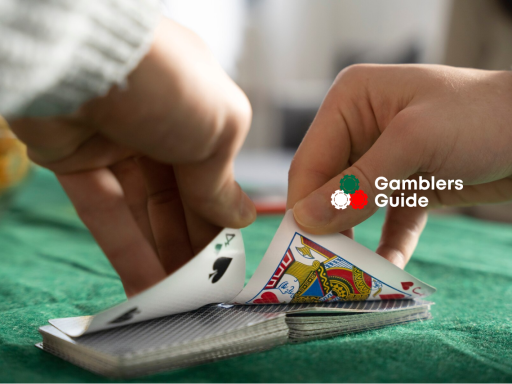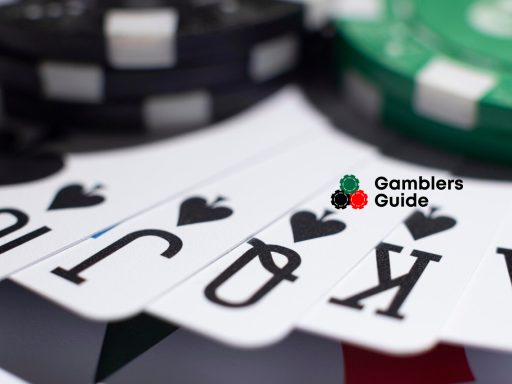Poker hands are one of the most crucial terms in this popular card entertainment. Such a phrase designates a five-card set each opponent constructs during four betting rounds (pre-flop, flop, turn, and river). To establish a combination, enthusiasts can utilize pocket cards + community ones, one hole card + four shared face-up cards, or even dispense with hole cards at all.
Then, in the showdown stage, participants must disclose their hole (pocket) cards. After that, their finished hands are compared by value, and a lucky beggar breaks the bank. To more deeply understand the game principles, take some time to learn basic theory and expert recommendations.
1. Figure out What Hands Are Believed to Be the Most Precious
In widespread table entertainment variations, the default hand order chart is applied. The perfect game set is Royal Flush, comprising:
- Ace
- King
- Queen
- Jack
- Ten
All above-mentioned cards must be of the equal suit, which is the main difficulty of reaching Royal Flush. For instance, a player can collect Ten of Spades, Jack of Spades, Queen of Spades, King of Spades, and Ace of Spades.
According to statistics, the chance of obtaining this breathtaking poker hand is far below 1%. Most avid enthusiasts have never created such a poker hand. With this fact in mind, analyzing other poker hands’ rankings is vital for dipping into this table game’s world.
2. Memorize What Beats What in the Game
Obviously, Royal Flush can beat all other poker combinations, and it has no competitors. But since the prospects of getting such a valuable set looks are bleak, let’s examine other steady hands:
- Straight Flush. This hand is only second to Royal Flush, and the probability of getting Straight Flush is also less than 1 percent. The combo is composed of any five consecutive cards of the same suit. For example, you can gather Ten, Nine, Eight, Seven, and Six of Diamonds each.
- Four of a Kind (or Quads). This poker set ranks third in the whole hand order chart, entailing four cards of equal value plus one random card. An example of Four of a Kind is the following combo: Jack of Spades, Jack of Diamonds, Jack of Hearts, Jack of Clubs, and Ten of Diamonds. Quads are beaten by both Straight Flush and Royal Flush. The chances of making Four of a Kind are about 0.03%.
- Full House. The fourth-ranking combination includes a triplet (three cards of the same value) and a pair (two cards of another equal value). This can be Five of Spades + Five of Clubs + Five of Hearts + Jack of Clubs + Jack of Hearts. Keep in mind that not all full-house combinations have the same value.
- Flush. Includes five cards of the identical suit, not tied to the sequence of values. It means you can combine Five of Spades, Eight of Spades, Ten of Spades, Jack of Spades, and King of Spades.
- Straight. This poker hand implies five cards of consecutive ranks but not the equal suit. For instance, Seven of Hearts, Eight of Spades, Nine of Diamonds, Ten of Clubs, and Jack of Hearts.
Despite the above hands’ appeal, all of them are challenging to obtain. In 31% of cases, poker winners beat their opponents with the Two Pairs combo, encompassing two cards of the same value plus the other two of another rank plus one random card. For example, you can unite Queen of Spades and Queen of Hearts, Ten of Diamonds, and Ten of Clubs, complemented by Jack of Spades.
The TOP frequent victorious sets also include the Pair one, appearing 27% of the time. To succeed, players make a pair of cards of the same value in conjunction with three non-matching cards.
3. Understand the Starting Hand Definition
Experienced poker enthusiasts think through the strategy already in the initial game stages. In the pre-flop phase, the starting hand term comes into play; it means two pocket (hole) cards, which participants get face-down. These two cards will be the ones that define your success at the end of a session. The most auspicious starting hands (or premium starters) include the following:
- Ace plus Ace
- King plus King
- Queen plus Queen
- Ace in conjunction with King
A bit less precious but still up-and-coming starters are pairs of Jacks, Tens, Nines, and Eights. You can look forward to the desired winnings if you utilize a well-thought-out strategy.
Enthusiasts are not always lucky, and a starter can appear disappointing. The weakest initial sets involve the following:
- Two plus Seven
- Two plus Eight
- Eight plus Three
- Six plus Two
- Nine plus Three/Two/Four
Pro gamblers recommend folding such combos since there are minuscule chances of building a competitive hand as a result. Initial sets consisting of Aces and small cards of different suits are also considered highly unfavorable.
4. Heed Pro Tips While Learning Poker Rules
As a newcomer, you can encounter various difficulties when studying fundamental poker terms and guidelines. Catch up several professional recommendations to get over the hump and be in sync with more experienced opponents:
- Download and print out the table of poker combos ranking. Give preferences to illustrated guides with brief explanations and colorful examples of various sets.
- Follow live poker tournament broadcasts. This approach lets you monitor all participants’ hands and exercise in defining the strongest sets on real examples.
- Find thematic platforms offering immersive poker challenges. Many related sites provide readers with practical exercises absolutely free. You’ll analyze different poker situations, including those connected to making hands.
- Don’t pass by RNG-based poker titles at online casinos. Most sites allow players to test card games in a demo mode. Master the rules without expenses and memorize all the available hands and their hierarchy.
Always respect the responsible gambling pillars and adhere to the predetermined budget limits. The poker world can be alluring and spectacular, but it shouldn’t take up the majority of your daily routine. Stay realistic and understand that medium-level poker hands win more frequently; however, you may collect the desired Royal Flush one day.






